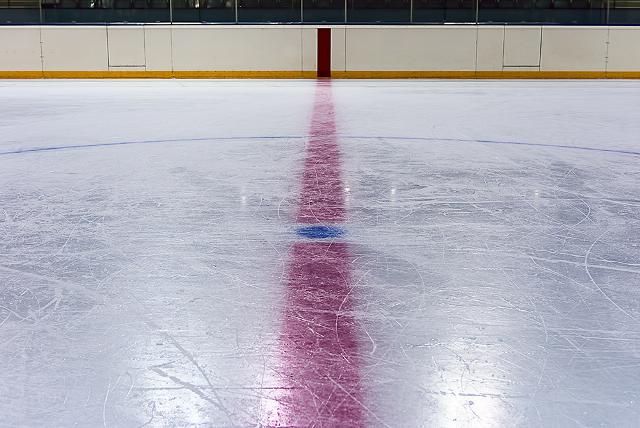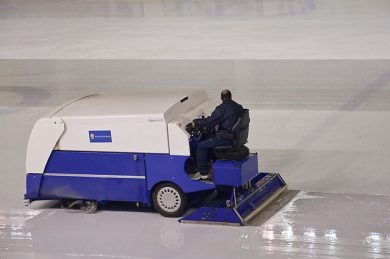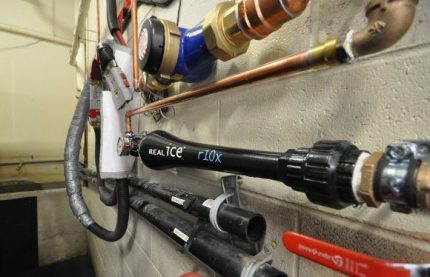
Cleaning up Canada’s game: how one technology could change the way we take to the ice
by David Kennedy, Online Reporter

Even the local hockey rink can't escape the climate-change economy

Zambonis have always flooded ice with steamy 65 C (150 F) water. Now, Realice Canada is looking to use a new energy-saving technology to make hot water floods a thing of the past. PHOTO: Bob Square Lenses/Shutterstock
VANCOUVER—For ice rink workers, filling up a Zamboni with anything but piping hot water is basically an act of sacrilege—just ask Fred Kilner, an industry veteran who’s maintained arenas on Vancouver Island since the mid-90s.
“Using cold water is sort of like going against the Bible,” he said. “You just don’t do that.”
And there’s a lot more to it than decades of tradition.
As any pro ice maker will tell you, cold water contains about three-times as much air as hot water. When laid down on an existing sheet of ice, trapped air bubbles often cause the fresh layer to shatter or flake out. For anything but the backyard rink, tap water just won’t do.
“When you put [down] hot water, it melts into the bottom layer of ice that you’re putting it on, so there’s a bond there automatically, so you end up with sort of one block of ice,” Kilner said.
Normally, professional ice makers would only consider using cold water if they were in dire straights—dealing with a broken boiler—and even then, they may just choose to hold off on the next flood until they could get it repaired. For the true purists, it’s steamy 65 C (150 F) water, or nothing.
One innovative technology, however, is aiming to change all that, and clean up Canadian rinks by eliminating the emissions associated with heating water.

An ice resurfacer flooding ice at an arena. The machine is often colloquially known as a Zamboni after the inventor and long-time industry leader. PHOTO: Myrabella, via Wikimedia Commons
“It’s highly disruptive,” Florian Gabriel, managing director of Realice Canada, said of his firm’s technology. “We’re not trying to change the hot water, or treat the efficiency of the boiler—it’s simply not needed.”
Realice Canada’s technology functions by forcing normal water into a vortex, or tornado-like motion. Spinning the water in such a fashion concentrates air bubbles trapped in the water into one stream, which the technology separates from the water. An arena’s ice resurfacer is then filled with the de-gassed water and can flood the ice as it normally would.
By removing the air from the cold water, Realice says its vortex system achieves the same thing as heating the water, with none of the emissions.
Originating in Malmö, Sweden, with the first installation dating back to 1998, the technology is in use at more than 320 ice arenas worldwide, including 17 in Canada. The cleantech machinery is marketed as Realice in Canada and imported by Swich Services Inc. from Sweden, where it’s made through an additive manufacturing, or 3D printing process.
Realice has even made its way into the National Hockey League; the NHL currently uses the technology to make the ice for its Winter Classic.
While Realice hasn’t taken the North American market by storm just yet, Gabriel thinks a handful of factors have fallen into place that will begin pushing the technology forward. Along with the emissions-reducing sentiment taking hold across the country, a recent 10-rink pilot project in British Columbia, sponsored by utility firm FortisBC, verified Realice’s emissions-saving claims.

Realice Canada’s wall-mounted technology de-aerates water by forcing it through a vortex. PHOTO: Realice
Most conventional rinks use natural gas to heat their water to about 65 C (150 F). With Realice allowing ice makers to flood at temperatures around 20 C (68 F), Fortis found the technology can reduce an arena’s natural gas emissions by 79 per cent, or by about 330 gigajoules per year. Meanwhile, ice rinks also have to run electrically-powered compressors to “shave” off the excess heat hot water floods leave on the ice, and cool the cement floor under their ice to ensure the water stays frozen. Requiring less run-time on the compressors, as well as allowing for a higher overall ice slab temperature, Realice says its vortex system reduces electricity usage by approximately 12 per cent, or 50,000 kilowatt hours per year.
With an estimated 3,500 to 4,000 ice rinks coast to coast, the emissions savings, even if a small percentage of those arenas made the switch, would be in the tens of thousands of tonnes of carbon dioxide equivalent annually.
In terms of cost, some back-of-the-envelope calculations will tell you an average arena, which operates seven months of the year, and floods its ice 10 times a day using 600-litres of water for each flood, will likely use more than one million litres of hot water to repair its ice each year. Between natural gas and electricity savings, Realice estimates making the switch will save an arena at least $12,000 a year. At $35,000, the unit itself does not come cheap, but the return on investment is under three years for a rink with a single sheet of ice, and under two years for arenas using a single Zamboni to flood multiple pads.
The biggest thing standing in the way, Gabriel thinks, is awareness.
“It’s a very traditional industry,” he said. “Ice has been made the same way for 25, 30, 40 years, and this is quite disruptive.”
There are indications that a change is coming, however. Despite the decades-old cold water stigma, and the fact he’s part of the “old generation” of ice makers, Kilner is a convert. Currently the facility supervisor at the Fuller Lake Arena, in the Municipality of North Cowichan, southeast of Nanaimo, B.C., he made the switch to cold water three ice seasons ago and hasn’t looked back.
“There’s nothing else out there that we could put in so easily and save the money we’re saving,” Kilner said.
At first, staff at Fuller Lake kept its switch to cold water floods under wraps. Looking for any change in ice quality, staff would check in regularly with a group of long-time hockey players without ever telling them why. When Kilner finally came clean, the players had to admit, they would never have known the difference.